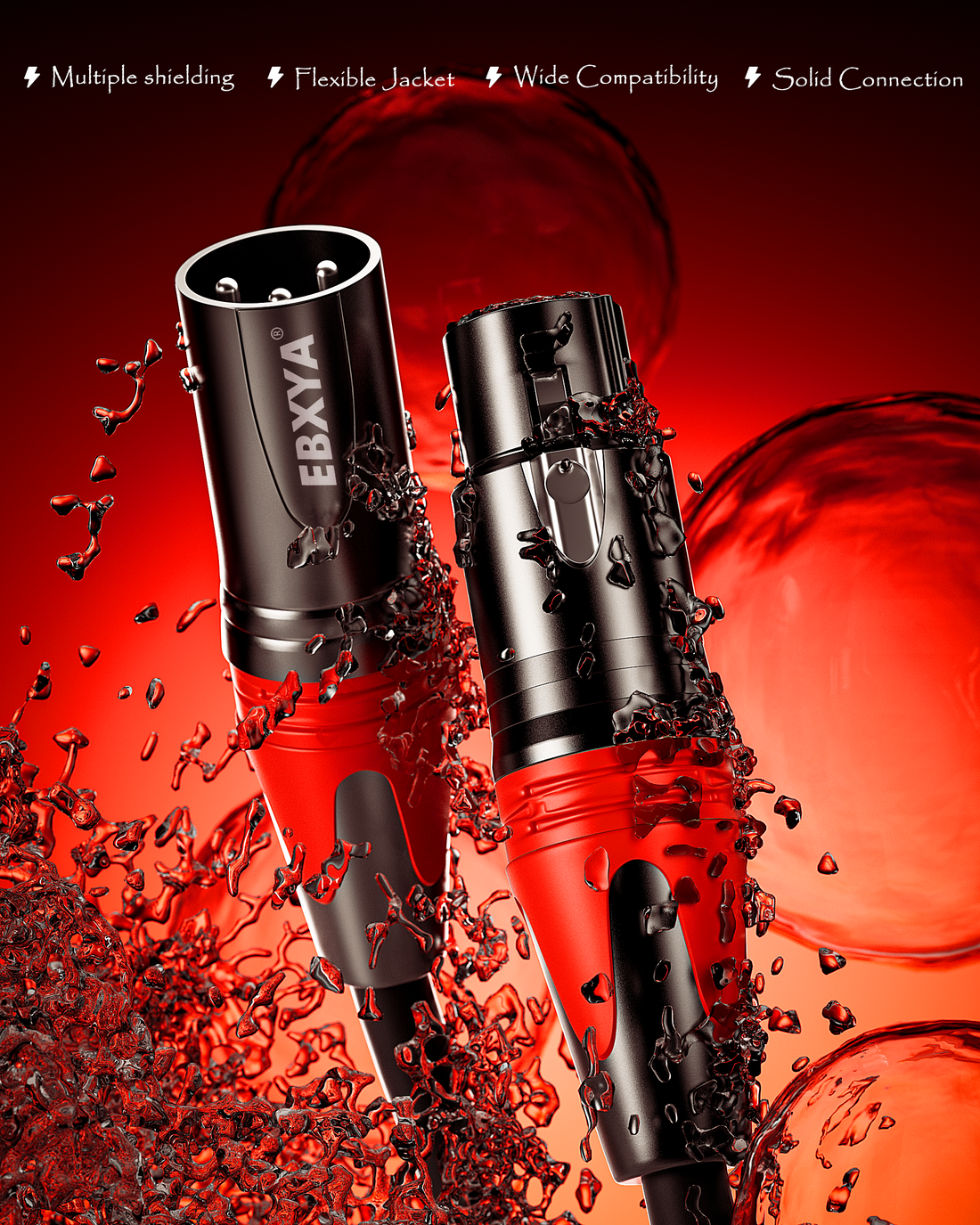
Microphone Cable Maintenance Guide: Keeping Your Audio Setup in Top Shape
Share
Microphone cables are an essential component of any audio setup. They connect your microphone to your audio interface or mixer, allowing you to record or amplify sound. But like any piece of equipment, microphone cables can wear out over time and can be subject to damage. Proper maintenance is essential to ensure that your microphone cables perform at their best and remain in good condition for years to come. In this article, we'll provide you with a microphone cable maintenance guide that will help you keep your cables in top shape.
Step 1: Check for Visible Damage
Before you begin cleaning or repairing your microphone cables, it's important to check for visible damage. Look for any cuts, tears, or frayed wires on the cable. If you find any damage, it's best to replace the cable altogether. This is because damaged cables can affect the quality of the sound and can even pose a safety risk.
Step 2: Clean the Cable
Cleaning your microphone cable is an important part of maintenance. Over time, cables can accumulate dirt and debris, which can affect the quality of the sound. To clean your cable, start by unplugging it from your audio equipment. Next, wipe the cable down with a soft cloth. If there is any dirt or grime that won't come off, use a mild soap and water solution to clean the cable. Be sure to dry the cable thoroughly before plugging it back in.
Step 3: Store the Cable Properly
Proper storage is essential to prolong the life of your microphone cable. When not in use, it's best to coil the cable neatly and store it in a dry, cool place. Avoid storing the cable in a damp or humid environment, as this can cause the cable to deteriorate over time.
Step 4: Avoid Pulling or Twisting the Cable
Pulling or twisting the cable can cause damage to the wires inside, affecting the quality of the sound. When using your microphone cable, avoid pulling or twisting it unnecessarily. If you need to move the cable, gently coil and uncoil it as you go.
Step 5: Use Cable Ties or Velcro Straps
Cable ties or velcro straps can be used to keep your microphone cable organized and tangle-free. When using cable ties, be sure to use them loosely so as not to damage the cable. Velcro straps are a good option as they are less likely to cause damage to the cable.
Step 6: Test Your Cable Regularly
Regular testing of your microphone cable is essential to ensure that it is performing at its best. To test your cable, plug it into your audio equipment and record a short sound clip. Listen back to the clip and make note of any issues, such as crackling or distortion. If you notice any issues, it's best to replace the cable as soon as possible.
Step 7: Invest in High-Quality Cables
Investing in high-quality microphone cables can save you time and money in the long run. High-quality cables are less likely to break or deteriorate over time, and they often provide better sound quality. When choosing a microphone cable, look for cables that are well-built and come with a warranty.
Conclusion
Proper maintenance of your microphone cables is essential to ensure that they perform at their best and remain in good condition for years to come. Regular cleaning, proper storage, and avoiding pulling or twisting the cable can all help prolong the life of your microphone cable. Using cable ties or velcro straps, testing your cable regularly, and investing in high-quality cables can also help keep your audio setup in top shape. By following this microphone cable maintenance guide, you can ensure that your audio setup performs at its best and that your cables remain in
Step 1: Check for Visible Damage
Before you begin cleaning or repairing your microphone cables, it's important to check for visible damage. Look for any cuts, tears, or frayed wires on the cable. If you find any damage, it's best to replace the cable altogether. This is because damaged cables can affect the quality of the sound and can even pose a safety risk.
Step 2: Clean the Cable
Cleaning your microphone cable is an important part of maintenance. Over time, cables can accumulate dirt and debris, which can affect the quality of the sound. To clean your cable, start by unplugging it from your audio equipment. Next, wipe the cable down with a soft cloth. If there is any dirt or grime that won't come off, use a mild soap and water solution to clean the cable. Be sure to dry the cable thoroughly before plugging it back in.
Step 3: Store the Cable Properly
Proper storage is essential to prolong the life of your microphone cable. When not in use, it's best to coil the cable neatly and store it in a dry, cool place. Avoid storing the cable in a damp or humid environment, as this can cause the cable to deteriorate over time.
Step 4: Avoid Pulling or Twisting the Cable
Pulling or twisting the cable can cause damage to the wires inside, affecting the quality of the sound. When using your microphone cable, avoid pulling or twisting it unnecessarily. If you need to move the cable, gently coil and uncoil it as you go.
Step 5: Use Cable Ties or Velcro Straps
Cable ties or velcro straps can be used to keep your microphone cable organized and tangle-free. When using cable ties, be sure to use them loosely so as not to damage the cable. Velcro straps are a good option as they are less likely to cause damage to the cable.
Step 6: Test Your Cable Regularly
Regular testing of your microphone cable is essential to ensure that it is performing at its best. To test your cable, plug it into your audio equipment and record a short sound clip. Listen back to the clip and make note of any issues, such as crackling or distortion. If you notice any issues, it's best to replace the cable as soon as possible.
Step 7: Invest in High-Quality Cables
Investing in high-quality microphone cables can save you time and money in the long run. High-quality cables are less likely to break or deteriorate over time, and they often provide better sound quality. When choosing a microphone cable, look for cables that are well-built and come with a warranty.
Conclusion
Proper maintenance of your microphone cables is essential to ensure that they perform at their best and remain in good condition for years to come. Regular cleaning, proper storage, and avoiding pulling or twisting the cable can all help prolong the life of your microphone cable. Using cable ties or velcro straps, testing your cable regularly, and investing in high-quality cables can also help keep your audio setup in top shape. By following this microphone cable maintenance guide, you can ensure that your audio setup performs at its best and that your cables remain in
